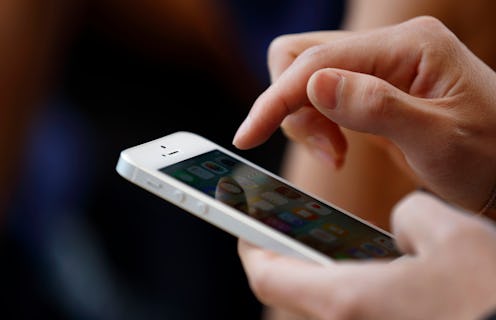News
4 iPhone Tricks For Hearing Impaired Individuals
Thursday, May 19 marks Global Accessibility Awareness Day, which is dedicated to raising awareness about making digital systems easier to use by people with disabilities. The occasion helps shine a light on the some of the ways that everyday tech can be difficult or impossible to use for some, and how that can be taken for granted by people who don't share those challenges. And in that spirit, Thursday is a good time to highlight some tips. For example, if you're a iOS user with a hearing impairment, there are a number of features that can help you have a fuller, easier experience with your iPhone.
If you have full use of their hearing, you may never have thought about it, but using an iPhone (or any smartphone) wouldn't be nearly as simple if you couldn't hear it clearly. Sound alarms might be less useful, or not useful at all, and the same goes for ringtones, text tones, and timer alerts. You could turn on vibrations, sure, but you couldn't necessarily understand what your phone was specifically trying to tell you ― a call or text or tweet or what have you.
Fortunately, there are some iOS features that can help increase the iPhone's usability for individuals with hearing impairments, and Apple itself wants people to know about them. That's not to say that there isn't a lot more work to be done to make all devices more accessible to a wider range of people, but here are some basic tips to open things up a bit if you're on iOS.
1. Visual Alerts
If your phone is tucked away in your pocket, the vibration is an easy tip-off that you're got an incoming call, text, tweet, or email. But what if the phone is sitting on your desk, or on a table several feet away, and there's no chance of you seeing, hearing, or feeling the vibration? This is when turning on LED Flash comes in handy. Whenever you receive an alert, the light on your phone's camera will start flashing, giving you a noticeable visual indicator. Just open up your Settings, then select General, then Accessibility, and you'll find the option in the Hearing section.
2. Monaural Headphone Audio (Mono)
If you're hard of hearing or deaf in one ear but not the other, or to varying extents in both ears, stereo-recorded audio in your headphones can be a problem. That's because stereo separates the audio into left and right tracks, so you're not hearing the full sound through both sides. Fortunately, this is an easy fix. Just like the LED Flash, you can turn mono audio on by entering Settings, selecting General, then Accessibility, and checking under the Hearing section.
3. Custom Vibrations
If you can't hear your ringtone and thus have to rely on vibrations to alert you, but you're also a busy or particularly active user who keeps a lot of different notifications turned on, it might be a good idea to set some custom vibrations to help you tell one from the other. Unlike the prior two features, this one isn't in the General options. You'll want to enter Settings, then select Sounds, and pick from the list of alert types what you want to set a new vibration for. On the next menu, tap Vibration, and then you'll be able to either pick from a list of existing vibration patterns, or enter your own with Create New Vibration. If you create a new one, make sure you save it, then go back into Sounds, and you can link it to whichever type of notification you want.
4. FaceTime
This is a simple one, although it's very useful, too. If you communicate through sign language, then obviously voice calls won't work. But if you're getting in touch with somebody on an Apple device, FaceTime is a useful option. With streaming video chat, you'll be able to communicate exactly what you need to. It's worth noting that while FaceTime is Apple's answer on this front, there are other video streaming options (Google Hangouts, for instance) that could help you out if both parties don't have Apple devices.
